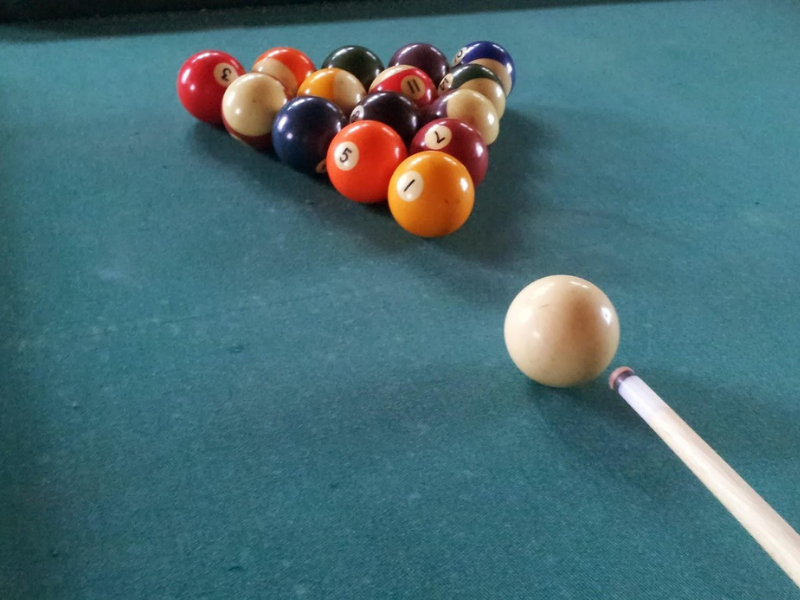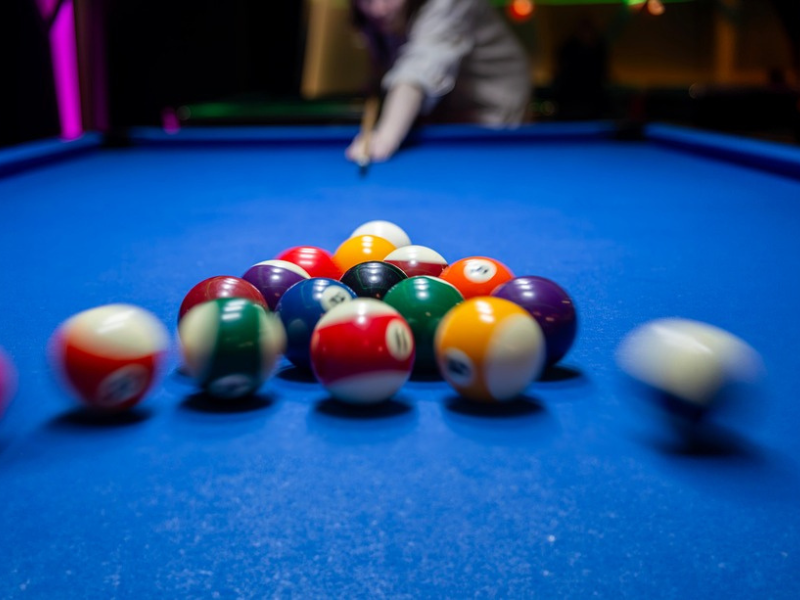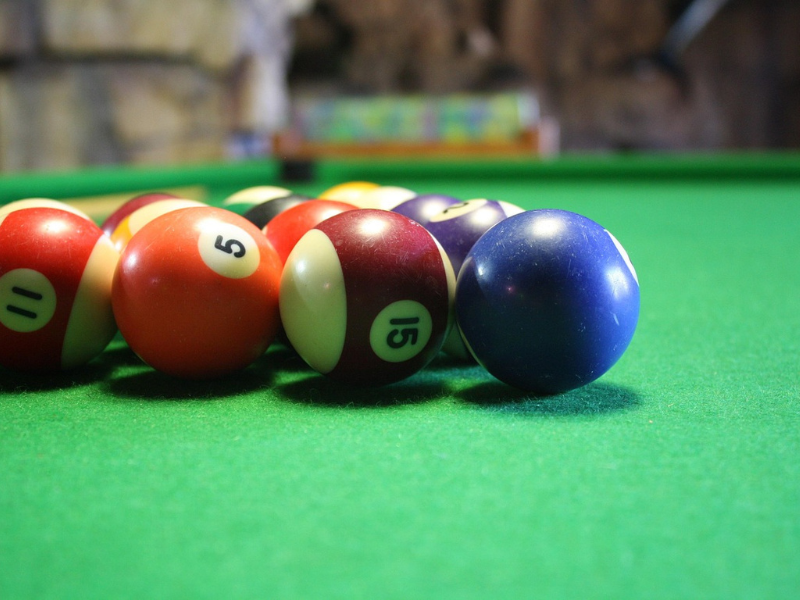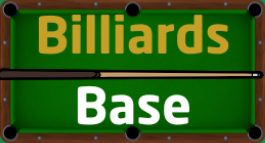American pool encompasses numerous games, but two variants dominate pool halls, home tables, and competitive tournaments worldwide: 8-ball and 9-ball. These games share the same equipment and basic cueing techniques yet offer completely different strategic challenges, pacing, and winning conditions that appeal to different player preferences and skill sets.
Understanding the distinctions between 8-ball and 9-ball matters for several reasons. New players often encounter both games simultaneously and benefit from knowing which suits their developing style. Experienced players find that mastering both games improves overall pool skills, as each emphasizes different tactical elements. Additionally, many pool leagues and tournaments feature both formats, making versatility valuable for competitive players.
8-ball emphasizes tactical thinking, pattern recognition, and defensive strategy through its group-based gameplay. Players must clear their designated ball group before attempting the decisive 8-ball, creating opportunities for complex strategic exchanges. 9-ball, conversely, rewards precision, aggressive play, and creative shot-making through its rotation format where players must contact balls in numerical order while seeking opportunities to pocket the winning 9-ball.
Whether you’re setting up your first home table or deciding which league to join, understanding these fundamental differences enhances your appreciation and enjoyment of American pool.
8-Ball Pool: Rules and Gameplay

8-ball stands as America’s most popular pool game, combining tactical depth with accessible rules that make it suitable for casual family play and serious competitive tournaments. The game’s appeal lies in its balance of strategy and skill, requiring players to think several shots ahead while executing precise ball control.
Equipment and Setup
Standard Equipment:
- Pool table: Standard 7ft, 8ft, or 9ft American pool table
- Balls: 15 numbered object balls plus cue ball
- Solids (1-7): Completely colored balls
- Stripes (9-15): White balls with colored stripe
- 8-ball: Black ball, game-winning target
- Triangle rack: Standard triangular rack for 15 balls
Proper 8-Ball Rack Setup:
- Triangle formation with all 15 object balls
- 8-ball positioned in the center (third row, middle position)
- Solid ball on front corner (typically ball #1)
- Stripe ball on other front corner
- Remaining balls randomly distributed with solids and stripes mixed
- Front ball positioned on foot spot
Basic 8-Ball Rules and Gameplay
Opening Break:
- Player breaks from behind head string
- Must drive cue ball into racked balls with sufficient force
- Legal break requires: four balls hit cushions, a ball pocketed, or combination of both
- Breaking player continues if balls are legally pocketed during break
Group Assignment:
- Open table: After break, table remains “open” until a player legally pockets a ball
- Group determination: First legally pocketed ball determines shooter’s group (solids or stripes)
- Opponent’s group: Other player automatically receives remaining group
- Choice shooting: During open table, players may shoot at any object ball except 8-ball
Standard Play Sequence:
- Hit your group first: Must contact your assigned group ball before any other ball
- Pocket your balls: Systematically clear all balls from your group (7 balls total)
- Call the 8-ball: Once group is cleared, announce intended pocket for 8-ball
- Win the game: Legally pocket 8-ball in called pocket
Essential Fouls and Penalties:
- Scratch (cue ball pocketed): Opponent gets ball-in-hand
- Wrong ball first: Hitting opponent’s group or 8-ball before your group
- No rail contact: Ball must hit cushion after contact unless ball is pocketed
- Ball off table: Object ball leaving playing surface
- 8-ball fouls: Early 8-ball pocket or scratch while shooting 8-ball results in automatic loss
Key Strategies in 8-Ball
Pattern Recognition and Planning:
8-ball rewards players who think multiple shots ahead:
- Survey your group: Identify problem balls that might block future shots
- Plan ball sequence: Determine optimal order for clearing your group
- Position for 8-ball: Ensure final group ball leaves good angle/position for 8-ball
- Identify key balls: Recognize which balls are crucial for maintaining position
Defensive Strategy:
Unlike faster pool games, 8-ball often benefits from tactical safety play:
- Safety shots: Leave cue ball where opponent has no clear shots
- Problem ball protection: Use your balls to block opponent’s problem balls
- Table control: Sometimes passing turn while maintaining advantage is correct
- Strategic thinking: Consider what helps opponent when planning every shot
Advanced Tactical Concepts:
- Ball blocking: Purposely leave balls that interfere with opponent’s clearance
- Key ball identification: Recognize which of opponent’s balls creates problems
- Endgame planning: Position early balls to help with later ball clearance
- Risk assessment: Balance aggressive play with table control maintenance
9-Ball Pool: Rules and Gameplay

9-ball represents pool’s faster, more aggressive style, emphasizing precision shot-making, creative combinations, and rapid-fire decision making. Professional 9-ball matches often conclude in minutes, creating exciting spectator experiences and requiring players to perform under intense pressure.
Equipment and Setup
Equipment Requirements:
- Same table and balls as 8-ball (American pool equipment)
- Diamond rack: Specialized rhombus-shaped rack for 9 balls
- Balls 1-9: Only nine object balls plus cue ball used
9-Ball Rack Formation:
- Diamond shape: Tight diamond formation with 9 balls
- 1-ball at front: Always positioned at foot spot
- 9-ball in center: Critical winning ball placed in middle of diamond
- Random placement: Other balls (2-8) distributed randomly
- Tight rack: All balls touching for optimal break dispersion
9-Ball Rules and Winning Conditions
Fundamental Rule: Lowest Ball First
- Sequential contact: Must hit lowest-numbered ball on table first
- Any ball pocketed: Can pocket any ball during shot (including 9-ball)
- Continuous shooting: Continue shooting while pocketing balls legally
- Rotation principle: Game progresses 1→2→3→…→9 in order
Multiple Ways to Win:
- Direct 9-ball: Pocket 9-ball when it’s lowest ball remaining
- Combination shots: Hit lowest ball first, then combo/carom into 9-ball
- Lucky shots: Accidentally pocket 9-ball during legal shot on lower ball
- Opponent fouls on 9-ball: Win if opponent commits foul while 9-ball goes in
Break Rules and Options:
- Legal break requirements: 1-ball must be struck first, four balls hit cushions
- Continue on made balls: Keep shooting if any ball pocketed on legal break
- Push-out option: After break, incoming player may elect “push-out” for strategic position
- Nine on break: Instant win if 9-ball pocketed on legal break
Ball-in-Hand Penalty:
Unlike 8-ball’s more varied fouls, most 9-ball fouls result in:
- Ball-in-hand: Opponent may place cue ball anywhere on table
- Severe penalty: Allows opponent to set up optimal position for run-out
- Common fouls: Scratch, wrong ball first, no rail contact, double-hit
Key Strategies in 9-Ball
Aggressive Position Play:
9-ball rewards offensive-minded players:
- Always attack: Look for ways to continue shooting rather than play safe
- Position for next ball: Every shot must consider angle/position for subsequent ball
- Run-out thinking: Plan to clear entire table rather than individual shots
- Speed control: Vary shot power to achieve precise cue ball placement
Creative Shot-Making:
- Combination opportunities: Constantly evaluate combo shots on 9-ball
- Bank and kick shots: Use cushions creatively when direct paths blocked
- Carom techniques: Hit multiple balls to achieve position or sink 9-ball
- Risk vs. reward: Balance aggressive plays with table control
Mental Game and Pressure:
- Quick decisions: Fast pace requires immediate tactical assessment
- Pressure situations: 9-ball often decided by single missed shot
- Momentum shifts: Games can change dramatically with one good or bad shot
- Tournament mindset: Professional 9-ball demands consistent excellence under pressure
Direct Comparison: 8-Ball vs. 9-Ball
Understanding the key differences between these games helps players choose which to focus on and appreciate the unique skills each develops.
Comprehensive Rules Comparison
| Feature | 8-Ball | 9-Ball |
| Balls Used | 15 object balls + cue ball | 9 object balls + cue ball |
| Rack Shape | Triangle | Diamond |
| Game Objective | Clear your group + pocket 8-ball | Pocket the 9-ball legally |
| Ball Groups | Solids (1-7) vs Stripes (9-15) | No groups, rotation 1→9 |
| Legal Target | Must hit your group first | Must hit lowest numbered ball first |
| Win Condition | Pocket 8-ball after clearing group | Pocket 9-ball any time legally |
| Skill Emphasis | Strategy, pattern play, safety | Precision, speed, shot-making |
| Game Pace | Moderate, tactical | Fast, aggressive |
| Average Game Time | 10-20 minutes | 3-10 minutes |
| Shot Selection | Group limitations create tactical choices | Sequential requirements limit options |
| Comeback Potential | Higher (defensive play possible) | Lower (ball-in-hand dominance) |
| Learning Curve | Moderate rules complexity | Simpler rules, harder execution |
Strategic Philosophy Differences
8-Ball Strategic Approach:
- Tactical patience: Sometimes correct play is defensive rather than offensive
- Long-term planning: Consider 3-5 shots ahead regularly
- Problem-solving: Each layout presents puzzle-like challenges
- Group management: Balance clearing balls with maintaining position advantages
9-Ball Strategic Approach:
- Aggressive offense: Always seek to continue shooting when possible
- Immediate precision: Every shot must be precisely executed for position
- Creative solutions: Find unconventional paths when direct routes blocked
- Pressure performance: Execute under time/mental pressure consistently
Skill Development Benefits
What 8-Ball Teaches:
- Strategic thinking: Planning multiple shots ahead
- Defensive concepts: When and how to play safe effectively
- Pattern recognition: Identifying optimal ball clearance sequences
- Pressure management: Handling decisive 8-ball shots
What 9-Ball Teaches:
- Position play: Precise cue ball control for specific positions
- Shot variety: Banks, kicks, combinations become essential
- Speed control: Varying power for exact positioning
- Mental toughness: Performing under rapid-decision pressure
Cross-Training Benefits:
Players who master both games develop more complete skill sets than specialists. 8-ball players learning 9-ball improve their position play and shot-making precision. 9-ball players learning 8-ball develop strategic thinking and defensive awareness that makes them more complete competitors.
Which Game Should You Play?

Choosing between 8-ball and 9-ball depends on several factors including skill level, personality preferences, available time, and competitive goals.
Understanding these factors helps players select games that match their interests and development needs.
Skill Level Considerations
For Beginning Players:
- Start with 8-ball: More forgiving rules allow learning basic concepts
- Slower pace: More time to think about shots and plan sequences
- Fewer precise requirements: Group play allows some shot selection flexibility
- Educational value: Tactical elements teach fundamental pool strategy
For Intermediate Players:
- Try both games: Develop well-rounded skills through variety
- 8-ball for strategy: Improve planning and pattern recognition skills
- 9-ball for precision: Develop advanced position play and shot-making
- Competitive preparation: Most leagues offer both game formats
For Advanced Players:
- Specialize based on strengths: Tactical players may prefer 8-ball, aggressive players 9-ball
- Tournament considerations: Professional circuits exist for both games
- Skill complement: Excellence in one game improves the other
Personality and Preference Factors
Choose 8-Ball if you:
- Enjoy strategic, chess-like thinking
- Prefer moderate game pace allowing thoughtful shot selection
- Like defensive play and tactical maneuvering
- Want games lasting 10-20 minutes
- Appreciate comeback opportunities through smart play
Choose 9-Ball if you:
- Prefer aggressive, fast-paced action
- Excel at precise position play and shot-making
- Enjoy creative combination and carom shots
- Want shorter games (3-10 minutes)
- Thrive under pressure and rapid decision-making
Equipment and Practical Considerations
Table Requirements:
Both games use identical equipment:
- Same pool table: Any standard American pool table works
- Same balls: Standard set accommodates both games
- Different racks: Triangle rack (8-ball) vs. diamond rack (9-ball)
- Same cues: No equipment changes needed between games
Learning Investment:
- Initial complexity: 8-ball has more rules but forgiving gameplay
- Skill development time: 9-ball requires more precise execution
- Practice efficiency: Learning both games simultaneously reinforces core skills
Social and Competitive Opportunities:
- Bar leagues: Most feature 8-ball as primary format
- Professional tours: WPA recognizes both as major disciplines
- Home play: Choose based on typical group preferences and skill levels
- Club tournaments: Many venues offer both formats regularly
Recommendation for New Players
Ideal Learning Path:
- Start with 8-ball: Learn basic rules, strategy, and table control
- Add 9-ball gradually: Introduce precision requirements and faster pace
- Practice both regularly: Develop complete skill set through variety
- Find your preference: Natural inclination toward one game often emerges
- Maintain competency: Even with specialization, keep skills sharp in both
Equipment Priority:
If purchasing equipment, prioritize versatility:
- Quality table suitable for both games
- Standard ball set (works for both formats)
- Both triangle and diamond racks
- Cues appropriate for American pool (either game)
